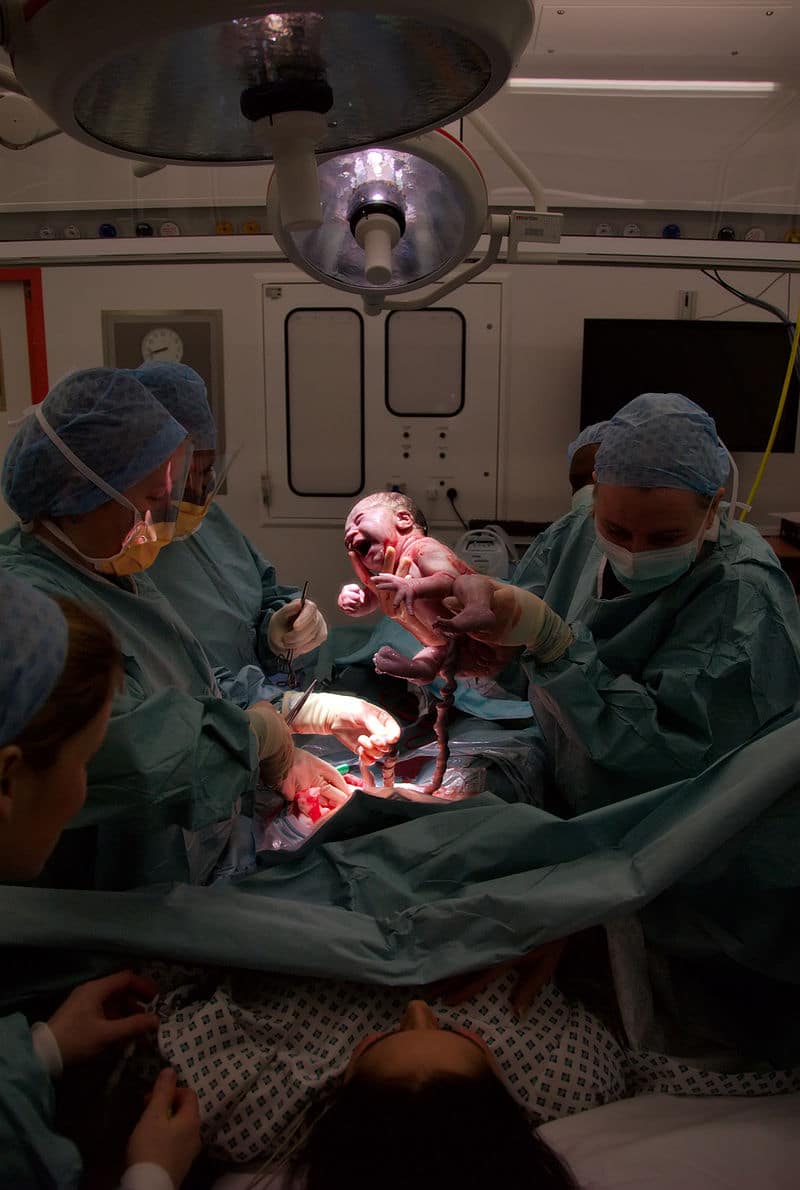Cesarean section, also known as C-section, is the use of surgery to deliver babies. A cesarean section is often necessary when a vaginal delivery would put the baby or mother at risk. About 2.5% of women choose to have an elective cesarean delivery, i.e. cesarean delivery on maternal request (CDMR). If there are no complications with your pregnancy or labor, a vaginal birth is safer than a caesarean birth. Like any surgical procedure, there are cesarean delivery side effects.
Efforts are being made to both improve access to and reduce the use of C-section. In the United States as of 2017, about 32% of deliveries are by C-section.

Indications of Cesarean Delivery
Cesarean delivery is often carried out when there are complications to pregnancy and there is increased risk associated with vaginal delivery. Some of the complications include:
1. Abnormal presentation – Babies are usually born head first. Other presentations of babies such as bottom first (breech) or transverse position may complicate the delivery process.
Breech babies are more likely to be harmed during vaginal delivery as there may be severe compression of the umbilical cord leading to insufficient oxygen supply to the baby.
2. Prolonged labor – This is a situation where by the womb is contracting normally but the baby does not exit the pelvis during delivery due to being physically blocked. This results in prolonged labor and complications for the baby and the mother. Complications for the baby include not getting enough oxygen which may lead to death. The complications for the mother include increased risk of infection, uterine rupture and post-partum bleeding.
3. Fetal distress – When there are signs that the fetus may not be well, a cesarean delivery may be used.
4. Uterine rupture – This is when the muscular wall of the uterus tears during pregnancy or childbirth. A uterine rupture can be a life-threatening complication of childbirth for both the mother and the baby. In the mother, uterine ruptures can cause major blood loss, or hemorrhage. However, fatal bleeding due to uterine rupture is rare when it occurs in a hospital.
5. Hypertension – Another indication of cesarean delivery is when there is hypertension in the mother or baby after amniotic rupture.
Other complications of pregnancy include:
– Large baby weighing more than 4,000 grams
– Failed labor induction
– Sexually transmitted diseases such as HIV infection high viral load, first outbreak of genital herpes
– Prior problems with healing of the perineum

Suturing of the uterus after extraction
Cesarean Delivery Side Effects on the Mother
A cesarean delivery comes with side effects as with any surgical procedure. Cesarean side effects include:
1. Bleeding – There is a risk of bleeding following cesarean delivery. Severe bleeding may require blood transfusion to treat.
2. Infection – There is also a risk of getting infected due to pathogens such as fungi, bacteria, etc. Wound infections occur after cesarean sections at a rate of 3-15%.
3. Deep venous thrombosis – This refers to the formation of a blood clot in a deep vein following the surgery. Deep venous thrombosis is one of the side effects of cesarean delivery.
4. Death – Death may also result from cesarean as much as it can from any surgical procedure.
In those who are low risk, the risk of death for cesarean delivery is 13 per 100,000 as against 3.5 per 100,000 for vaginal birth in the developed world – a very small risk of death in either situation in resource-rich settings.
Subsequent Pregnancies
It is not advisable for women who wish to have large families to elect for cesarean delivery as women who have had cesarean are less likely to become pregnant again compared to women who have previously delivered only vaginally.
Also, it has been found that women who had just one previous cesarean section are more likely to have problems with their second birth.
Cesarean Delivery Side Effects on the Child
The risks to the child include:
1. Wet lung – Retention of fluid in the lungs can occur if not expelled by the pressure of contractions during labor.
2. Potential for early delivery and complications – Preterm delivery may be inadvertently carried out if the due-date calculation is inaccurate. One study found an increased complication risk if a repeat elective caesarean section is performed even a few days before the recommended 39 weeks.
3. Higher infant mortality risk – In caesarean sections performed with no indicated medical risk (singleton at full term in a head-down position with no other obstetric or medical complications), the risk of death in the first 28 days of life has been cited as 1.77 per 1,000 live births among women who had caesarean sections, compared to 0.62 per 1,000 for women who delivered vaginally.
Birth by caesarean section also seems to be associated with worse health outcomes later in life, including overweight or obesity and problems in the immune system.
Recovery After a Cesarean Delivery
It is common for women who undergo caesarean section to have reduced or absent bowel movements for hours to days. During this time, women may experience abdominal cramps, nausea and vomiting. This usually resolves without treatment. Abdominal, wound and back pain can continue for months after a caesarean section. Non-steroidal anti-inflammatory drugs can be helpful. Women who have had a caesarean are more likely to experience pain that interferes with their usual activities than women who have vaginal births, although by six months there is generally no longer a difference. Pain during sexual intercourse is less likely than after vaginal birth; by six months there is no difference.
There may be a somewhat higher incidence of postnatal depression in the first weeks after childbirth for women who have caesarean sections, but this difference does not persist. Some women who have had caesarean sections, especially emergency caesareans, experience post-traumatic stress disorder.
Read More: Rib Removal Surgery


